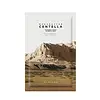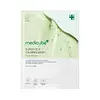What's inside
What's inside
 Key Ingredients
Key Ingredients

 Benefits
Benefits

 Concerns
Concerns

No concerns
 Ingredients Side-by-side
Ingredients Side-by-side

Centella Asiatica Extract
CleansingWater
Skin ConditioningDipropylene Glycol
HumectantGlycereth-26
HumectantGlycerin
Humectant1,2-Hexanediol
Skin ConditioningBetaine
HumectantButylene Glycol
HumectantPaeonia Suffruticosa Root Extract
Skin ProtectingPolyglyceryl-10 Laurate
Skin ConditioningChamomilla Recutita Flower Extract
MaskingGlyceryl Caprylate
EmollientCarbomer
Emulsion StabilisingXanthan Gum
EmulsifyingArginine
MaskingEthylhexylglycerin
Skin ConditioningSodium Hyaluronate
HumectantDextrin
AbsorbentTheobroma Cacao Extract
Skin ConditioningPropanediol
SolventCoptis Japonica Root Extract
Skin ConditioningMentha Arvensis Leaf Oil
MaskingSodium Hyaluronate Crosspolymer
HumectantHydrolyzed Glycosaminoglycans
HumectantBenzyl Glycol
SolventCentella Asiatica Extract, Water, Dipropylene Glycol, Glycereth-26, Glycerin, 1,2-Hexanediol, Betaine, Butylene Glycol, Paeonia Suffruticosa Root Extract, Polyglyceryl-10 Laurate, Chamomilla Recutita Flower Extract, Glyceryl Caprylate, Carbomer, Xanthan Gum, Arginine, Ethylhexylglycerin, Sodium Hyaluronate, Dextrin, Theobroma Cacao Extract, Propanediol, Coptis Japonica Root Extract, Mentha Arvensis Leaf Oil, Sodium Hyaluronate Crosspolymer, Hydrolyzed Glycosaminoglycans, Benzyl Glycol
Water
Skin ConditioningGlycerin
HumectantMethylpropanediol
Solvent1,2-Hexanediol
Skin ConditioningArginine
MaskingCarbomer
Emulsion StabilisingPropanediol
SolventPolyglyceryl-10 Laurate
Skin ConditioningAllantoin
Skin ConditioningEthylhexylglycerin
Skin ConditioningPanthenol
Skin ConditioningHydroxyethylcellulose
Emulsion StabilisingDisodium EDTA
Dipotassium Glycyrrhizate
HumectantVitis Vinifera Seed Oil
EmollientMelaleuca Alternifolia Leaf Oil
AntioxidantDipropylene Glycol
HumectantButylene Glycol
HumectantHouttuynia Cordata Extract
Skin ConditioningMelaleuca Alternifolia Leaf Extract
PerfumingPolyglyceryl-10 Oleate
Skin ConditioningCentella Asiatica Root Extract
Skin ConditioningCentella Asiatica Leaf Extract
Skin ConditioningCentella Asiatica Extract
CleansingSodium Acetate
BufferingPentylene Glycol
Skin ConditioningSodium Hyaluronate
HumectantMadecassoside
AntioxidantCellulose
AbsorbentPolyglyceryl-4 Caprylate
EmollientLecithin
EmollientTocopherol
AntioxidantStearic Acid
CleansingHydrolyzed Collagen
EmollientPortulaca Oleracea Extract
Skin ConditioningHydrolyzed Elastin
EmollientAsiatic Acid
Skin ConditioningAsiaticoside
AntioxidantMadecassic Acid
Skin ConditioningWater, Glycerin, Methylpropanediol, 1,2-Hexanediol, Arginine, Carbomer, Propanediol, Polyglyceryl-10 Laurate, Allantoin, Ethylhexylglycerin, Panthenol, Hydroxyethylcellulose, Disodium EDTA, Dipotassium Glycyrrhizate, Vitis Vinifera Seed Oil, Melaleuca Alternifolia Leaf Oil, Dipropylene Glycol, Butylene Glycol, Houttuynia Cordata Extract, Melaleuca Alternifolia Leaf Extract, Polyglyceryl-10 Oleate, Centella Asiatica Root Extract, Centella Asiatica Leaf Extract, Centella Asiatica Extract, Sodium Acetate, Pentylene Glycol, Sodium Hyaluronate, Madecassoside, Cellulose, Polyglyceryl-4 Caprylate, Lecithin, Tocopherol, Stearic Acid, Hydrolyzed Collagen, Portulaca Oleracea Extract, Hydrolyzed Elastin, Asiatic Acid, Asiaticoside, Madecassic Acid
 Reviews
Reviews

Ingredients Explained
These ingredients are found in both products.
Ingredients higher up in an ingredient list are typically present in a larger amount.
1,2-Hexanediol is a synthetic liquid and another multi-functional powerhouse.
It is a:
- Humectant, drawing moisture into the skin
- Emollient, helping to soften skin
- Solvent, dispersing and stabilizing formulas
- Preservative booster, enhancing the antimicrobial activity of other preservatives
Arginine is an amino acid that is important for human development. Your body uses is it to produce hair keratin and skin collagen.
As a cosmetic ingredient, Arginine has antioxidant properties and can also help repair damaged skin. This ingredient is derived either synthetically or from animals.
Arginine isn't fungal acne safe when used in the presence of other lipids (fats, fatty acids, oils, esters, etc). Oils and fats occur naturally within the skin, so take caution when using Arginine if you're prone to fungal acne.
Learn more about ArginineButylene Glycol (or BG) is used within cosmetic products for a few different reasons:
Overall, Butylene Glycol is a safe and well-rounded ingredient that works well with other ingredients.
Though this ingredient works well with most skin types, some people with sensitive skin may experience a reaction such as allergic rashes, closed comedones, or itchiness.
Learn more about Butylene GlycolCarbomer is a polymer of acrylic acid. Its main role is to create a gel consistency.
A high amount of carbomer can cause pilling or balling up of products. Don't worry, most products contain 1% or less of carbomer.
Centella Asiatica Extract (Centella) is derived from an herb native to Southeast Asia. It is famous for its anti-inflammatory and soothing properties.
Centella is rich in antioxidants and amino acids, such as Madecassic Acid and Asiaticoside.
Studies show the compounds in centella help with:
The combination of all these properties makes centella effective at soothing, hydrating, and protecting the skin.
Other great components of centella include Vitamin A, vitamin C, several B vitamins, and Asiatic Acid.
Fun fact: Centella has been used as a medicine and in food for many centuries. As a medicine, it is used to treat burns, scratches, and wounds.
Learn more about Centella Asiatica ExtractDipropylene Glycol is a synthetically created humectant, stabilizer, and solvent.
This ingredient helps:
Dipropylene glycol is technically an alcohol, but it belongs to the glycol family (often considered part of the ‘good’ alcohols). This means it is hydrating and gentle on skin unlike drying solvent alcohols like denatured alcohol.
As a masking agent, Dipropylene Glycol can be used to cover the smell of other ingredients. However, it does not have a scent.
Studies show Dipropylene Glycol is considered safe to use in skincare.
Learn more about Dipropylene GlycolEthylhexylglycerin (we can't pronounce this either) is commonly used as a preservative and skin softener. It is derived from glyceryl.
You might see Ethylhexylglycerin often paired with other preservatives such as phenoxyethanol. Ethylhexylglycerin has been found to increase the effectiveness of these other preservatives.
Glycerin is already naturally found in your skin. It helps moisturize and protect your skin.
A study from 2016 found glycerin to be more effective as a humectant than AHAs and hyaluronic acid.
As a humectant, it helps the skin stay hydrated by pulling moisture to your skin. The low molecular weight of glycerin allows it to pull moisture into the deeper layers of your skin.
Hydrated skin improves your skin barrier; Your skin barrier helps protect against irritants and bacteria.
Glycerin has also been found to have antimicrobial and antiviral properties. Due to these properties, glycerin is often used in wound and burn treatments.
In cosmetics, glycerin is usually derived from plants such as soybean or palm. However, it can also be sourced from animals, such as tallow or animal fat.
This ingredient is organic, colorless, odorless, and non-toxic.
Glycerin is the name for this ingredient in American English. British English uses Glycerol/Glycerine.
Learn more about GlycerinPolyglyceryl-10 Laurate is an ester of lauric acid and Polyglycerin-10.
Polyglyceryl-10 Laurate is a cleansing agent and emulsifier. It helps gather dirt, oil, and other pollutants to be rinsed away. As an emulsifier, it helps prevent ingredients from separating, such as oil and water.
Polyglyceryl-10 Laurate may not be fungal acne safe.
Learn more about Polyglyceryl-10 LauratePropanediol is an all-star ingredient. It softens, hydrates, and smooths the skin.
It’s often used to:
Propanediol is not likely to cause sensitivity and considered safe to use. It is derived from corn or petroleum with a clear color and no scent.
Learn more about PropanediolSodium Hyaluronate is hyaluronic acid's salt form. It is commonly derived from the sodium salt of hyaluronic acid.
Like hyaluronic acid, it is great at holding water and acts as a humectant. This makes it a great skin hydrating ingredient.
Sodium Hyaluronate is naturally occurring in our bodies and is mostly found in eye fluid and joints.
These are some other common types of Hyaluronic Acid:
Learn more about Sodium HyaluronateWater. It's the most common cosmetic ingredient of all. You'll usually see it at the top of ingredient lists, meaning that it makes up the largest part of the product.
So why is it so popular? Water most often acts as a solvent - this means that it helps dissolve other ingredients into the formulation.
You'll also recognize water as that liquid we all need to stay alive. If you see this, drink a glass of water. Stay hydrated!
Learn more about Water